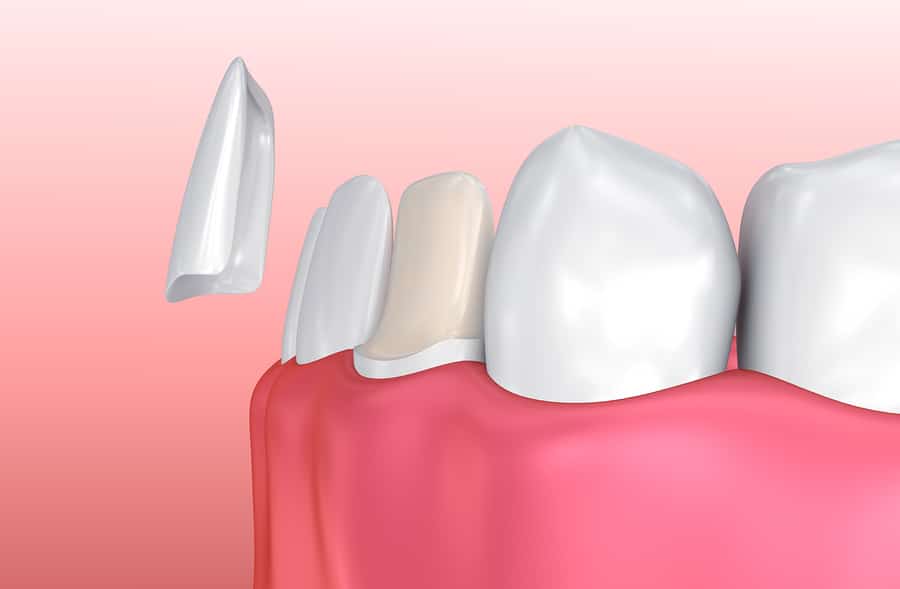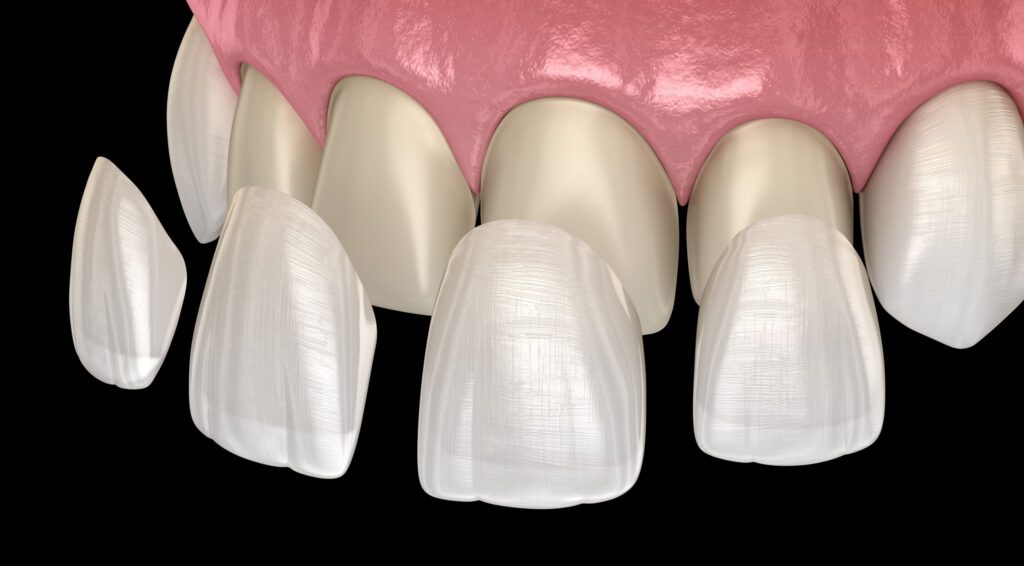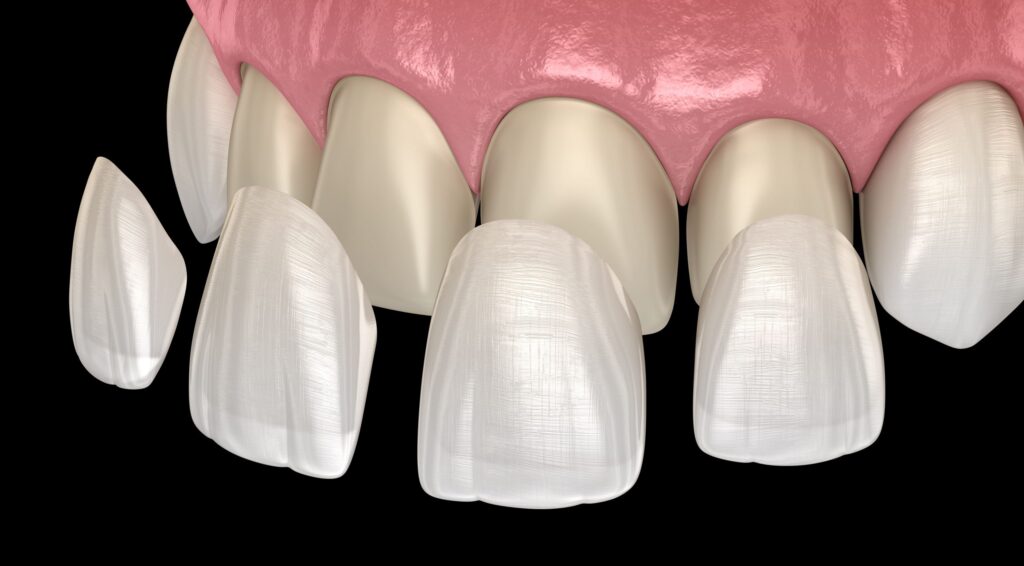Porcelain Veneers: Your Complete Guide to a Flawless Smile
If you’ve ever dreamed of having a perfect, confident smile, porcelain veneers might be precisely what you’re looking for. These ultra-thin, custom-designed shells can dramatically enhance the appearance of your teeth, without major dental work. In this article, we’ll walk you through everything you need about porcelain veneers: what they are, how they’re made, how to take care of them, and when they’re recommended. We’ll also compare them to zirconium veneers so you can make the best choice for your smile.
What Are the Advantages of Porcelain Veneers?
Porcelain veneers are thin layers of dental-grade ceramic that are bonded to the front surface of your teeth. They’re custom-made to match your natural teeth’s shape, color, and size, creating a seamless, beautiful look.
Dentists often use veneers to treat:
- Discolored or stained teeth
- Chipped or broken teeth
- Gaps between teeth
- Slight misalignment or irregular shape
Think of them as a cosmetic solution that covers imperfections and gives your smile a bright, symmetrical, and natural finish. They’re especially popular among patients who want long-lasting results without undergoing orthodontics or more invasive procedures.

How Are Porcelain Veneers Made?
The process of getting porcelain veneers usually takes two to three dental visits. Here’s a simple breakdown:
- Consultation & Evaluation: Your dentist will assess your teeth, discuss your goals, and take digital or physical impressions.
- Tooth Preparation: A skinny layer of enamel (often less than a millimeter) is removed to make room for the veneer.
- Temporary Veneers: While your final veneers are being made in the lab, temporary ones may be placed to protect your teeth.
- Final Bonding: Once your custom veneers are ready, your dentist will bond them to your teeth, adjust the fit, and polish them for a natural shine.
The final result? A smile that looks real, feels natural, and reflects your personality.
How to Care for Them After Installation?
Porcelain veneers are durable and stain-resistant, but they require proper care like any investment. The good news? Taking care of them is simple and very similar to caring for natural teeth:
- Brush twice a day with a soft-bristled toothbrush and non-abrasive toothpaste.
- Floss daily to keep your gums and the areas around the veneers healthy.
- Avoid biting complex objects, such as ice, pens, or fingernails.
- Limit staining foods and drinks like coffee, red wine, and berries, especially around the edges of the veneers.
- Schedule regular dental cleanings and checkups to ensure everything stays in perfect shape.
- Use a nightguard if you grind your teeth while sleeping.
With good care, porcelain veneers can last 10 to 15 years—or even longer.

When Is It Recommended to Get a Porcelain Veneer Bridge?
A porcelain veneer bridge is a great solution when one or more front teeth are missing and you want a natural-looking, fixed alternative to dentures. Unlike removable options, a bridge fills the gap using neighboring teeth for support, restoring both function and aesthetics.
Your dentist may recommend a veneer bridge if:
- You have missing or severely damaged front teeth.
- Adjacent teeth are healthy enough to support the bridge.
- You want a stable, long-term solution that looks like real teeth.
It’s a great option if you aim to rebuild your smile visually flawlessly.
What Are the Advantages of Porcelain Veneers?
Porcelain veneers come with several benefits that make them one of the most popular choices in cosmetic dentistry:
- Natural appearance: They mimic the translucency and shine of real enamel.
- Stain resistance: Unlike natural teeth, veneers resist most stains.
- Durability: When properly maintained, they can last well over a decade.
- Minimally invasive: Only a tiny amount of enamel is removed.
- Instant transformation: You get a brand-new smile in just a few visits.
Porcelain veneers, with their instant transformation capability, are a top-tier option for anyone who wants a fast, safe, and beautiful way to enhance their smile. The prospect of a brand-new smile in just a few visits is sure to excite those considering cosmetic dental procedures.

What Is the Difference Between Zirconium Veneers and Porcelain Veneers?
While both porcelain and zirconium veneers aim to improve the appearance of your teeth, there are a few key differences:
Porcelain veneers are known for their natural look and translucency, making them ideal for the front teeth. They reflect light similarly to real enamel and blend beautifully with your natural smile.
On the other hand, Zirconium veneers are stronger and more durable, making them better suited for teeth that experience more pressure, like molars. However, they are slightly less translucent, which can affect the overall aesthetic if used on front teeth.
In summary:
- Choose porcelain for front teeth and cosmetic perfection.
- Choose zirconium when you need more strength, especially in the back of the mouth.
Your dentist is your best ally in choosing the right type of veneer based on your unique needs and smile goals. Trust their expertise to guide you towards the best decision for your smile.
Porcelain veneers are a proven, powerful way to completely transform your smile. Whether you’re correcting imperfections or aiming for a full smile makeover, they offer a perfect balance of beauty, function, and longevity.
If you’re considering porcelain veneers, it’s crucial to consult with a trusted cosmetic dentist. The right expert will not only guide you through the process but also help you make informed decisions that align with your smile goals. With their help, you can achieve a smile that feels like you, but better.
Ready to love your smile again? Porcelain veneers might be the perfect next step. Make an appointment today! Click here





